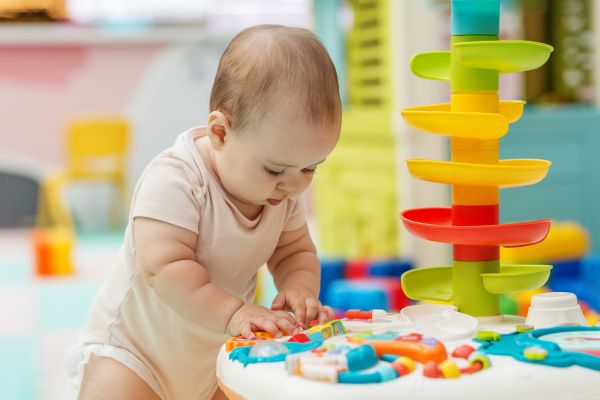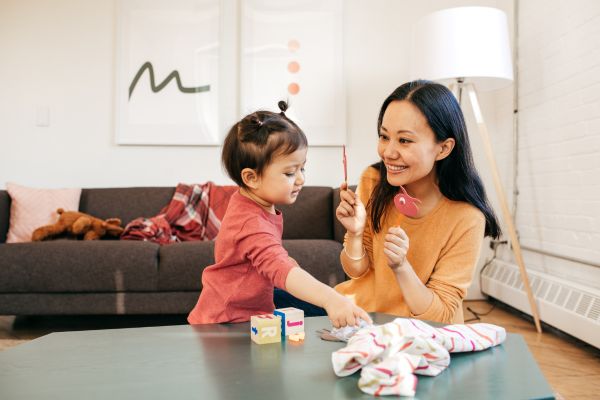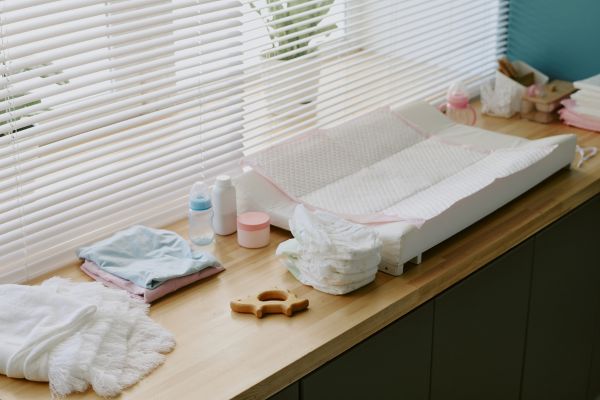When you think about baby toys, it’s easy to picture bright plastic things from the store — but let’s be real, some of the best toys for infants are the ones made right at home. Not only are homemade sensory toys for infants more personal and budget-friendly, but they also spark curiosity, creativity, and connection. Babies love to explore, touch, shake, and chew everything (yes, everything), and that’s exactly how they learn. So, why not give them something you made with love?
Let’s dive into why sensory play is so important, how to make simple toys at home, and how these little creations can help your baby grow and thrive.
Why Sensory Play Matters So Much
Infants experience the world through their senses. Every sound, touch, and smell helps them understand how things work. Sensory toys — especially homemade sensory toys for infants — give babies the chance to explore safely while stimulating brain development. When a baby squeezes a squishy bag, feels different textures, or listens to gentle rattling sounds, they’re doing more than playing. They’re building neural pathways that shape how they perceive the world.
And here’s the thing: you don’t need fancy equipment or designer toys. A few everyday items from your kitchen or craft drawer can create amazing sensory experiences.
The Beauty of Homemade Sensory Toys for Infants
Making toys at home gives you total control. You choose the materials, textures, and colors, ensuring everything is safe and suited for your baby’s age. Plus, it’s fun for you too! There’s something so satisfying about watching your little one giggle while playing with something you made yourself.
Another huge perk? You save money. Store-bought sensory toys can be surprisingly expensive, but you can create similar (or even better) results with things you already have lying around. Think soft fabric scraps, rice, or empty plastic bottles — these can all become the building blocks of sensory exploration.
Soft and Tactile Fun: Fabric Sensory Squares
Grab a few small pieces of fabric — maybe an old T-shirt, a scrap of velvet, some cotton, or a bit of felt. Cut them into equal squares and sew or glue the edges so they don’t fray. You now have your very own set of sensory squares! Each texture introduces your baby to new sensations. Watch how their tiny fingers explore the smooth silk versus the fuzzy fleece. It’s adorable and educational all at once.
You can even toss them into a little basket so your baby can “discover” each one on their own. It’s a mini treasure hunt of textures.
Shake, Rattle, and Roll: Bottle Shakers
One of the simplest homemade sensory toys for infants is the classic shaker bottle. Take a clean, empty plastic bottle and fill it with different materials — rice, beans, pasta, or even small bells. Secure the lid tightly (seriously, glue or tape it shut), and you’ve got an instant rattle. The sounds fascinate babies, and they’ll love figuring out that shaking makes noise.
Want to mix it up? Try different fillings for different sounds. A bottle with rice makes a soft swish, while one with dried beans gives a deeper rattle. Babies notice those tiny differences — it’s part of how they learn cause and effect.
The Sensory Bag: Squishy, Safe, and Totally Mesmerizing
A sensory bag is another awesome idea. Take a sturdy ziplock bag and fill it with something squishy — maybe hair gel, water beads (if your baby is too young, skip these), or just a bit of water and glitter. Seal it tight (and then seal it again with duct tape, trust me). Tape it down to the floor or a highchair tray and let your baby press, poke, and squish to their heart’s content.
The way the gel moves under their hands is hypnotic. Plus, it helps with motor skills and hand-eye coordination. And when they slap it with excitement? That’s pure joy.
Colorful Sensory Scarves
Scarves are lightweight, safe, and perfect for movement play. You can make your own with thin pieces of fabric like chiffon or silk substitutes. Cut them into squares, hem the edges, and you’ve got instant playtime magic. Toss them in the air, let your baby grab at them, or hide behind one for a game of peekaboo. The way scarves float down through the air keeps babies wide-eyed with wonder.
These homemade sensory toys for infants help babies understand movement, color, and texture — all while giggling with you.
Water Play Without the Mess
Water is one of the most fascinating sensory experiences for infants, but it can also be a wet disaster if you’re not careful. Here’s a neat trick: fill a sealed plastic bottle or container with colored water, a few small floating toys, or even glitter. Seal it tight (and again, tape it for extra safety). Your baby will love watching the objects move and swirl inside. It’s like a mini aquarium they can shake and roll.
You can also place a towel on the floor, pour a tiny bit of water into a shallow tray, and let them splash under supervision. The coolness, wetness, and sound of water splashing is a full sensory adventure.
Texture Boards: A Whole World of Touch
If you’ve got a few minutes and some creativity, make a texture board. Grab a sturdy piece of cardboard or wood and glue on different materials — sandpaper, bubble wrap, ribbon, foil, fabric, or even soft sponges. Your baby can run their hands over it, discovering how each texture feels. This simple idea transforms basic materials into a rich sensory experience.
And since it’s homemade, you can swap out materials whenever you want. Keep things fresh and interesting for your little explorer.
Exploring Everyday Objects
Sometimes, the best homemade sensory toys for infants are just everyday items. Think about measuring cups, wooden spoons, or silicone kitchen tools. As long as they’re clean, large enough not to be a choking hazard, and safe for baby hands, they can be wonderful playthings. Babies love the sound of spoons tapping, the feel of smooth metal, or the squish of silicone. To them, these are treasures — little windows into how the world works.
The key is to always supervise playtime. Babies will put things in their mouths, so stay close and keep it safe.
Keeping Safety First
Now, before you start raiding your kitchen, let’s talk safety. Homemade sensory toys for infants are only great if they’re baby-safe. Always double-check that there are no small parts, sharp edges, or choking hazards. Use non-toxic materials, seal containers tightly, and inspect toys regularly for wear and tear. Babies are curious and strong — you’d be surprised how determined those tiny fingers can be.
A good rule of thumb? If it can fit through a toilet paper roll, it’s too small for your baby to play with unsupervised.
Final Thoughts: Why Homemade Sensory Toys Are Worth It
At the end of the day, homemade sensory toys for infants aren’t just about saving money or staying busy. They’re about connection. When you create something for your baby, you’re not just crafting a toy — you’re building memories. You’re showing them textures, sounds, and sensations that help them grow curious and confident in exploring the world.
So, grab a few items, clear a space, and get creative. Watch your baby’s eyes light up as they discover new sounds, feelings, and movements. That’s the real magic — not in the toy itself, but in the moments you share together.
Because, honestly, there’s nothing more rewarding than seeing your baby’s face light up over something you made with your own hands.


